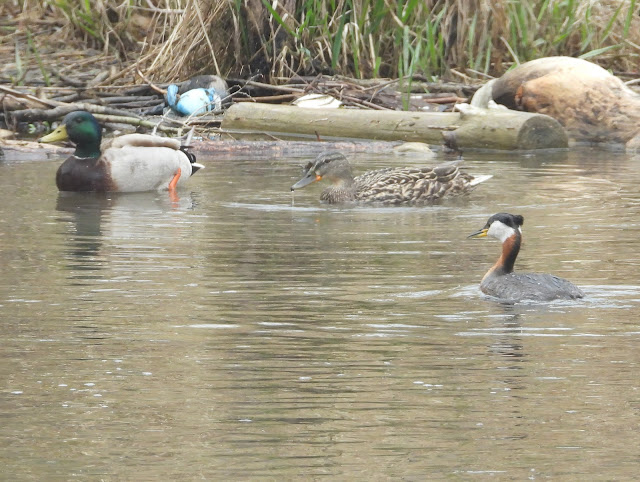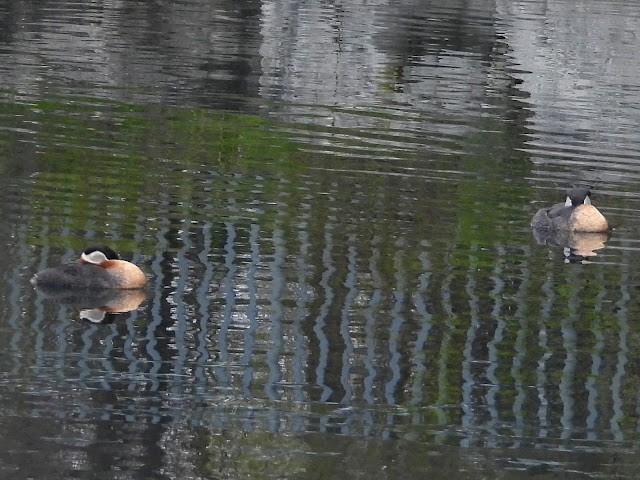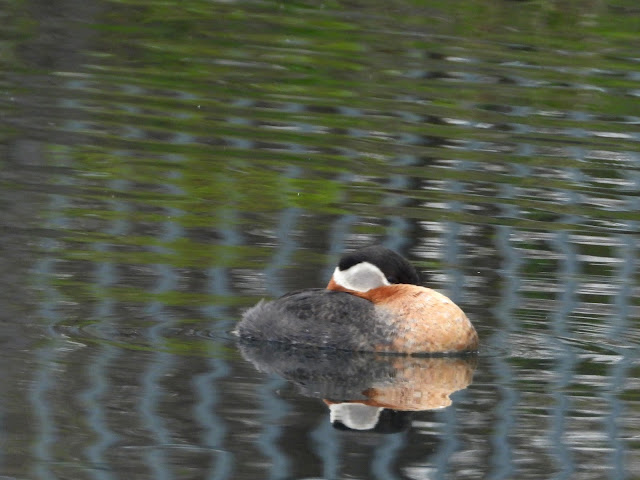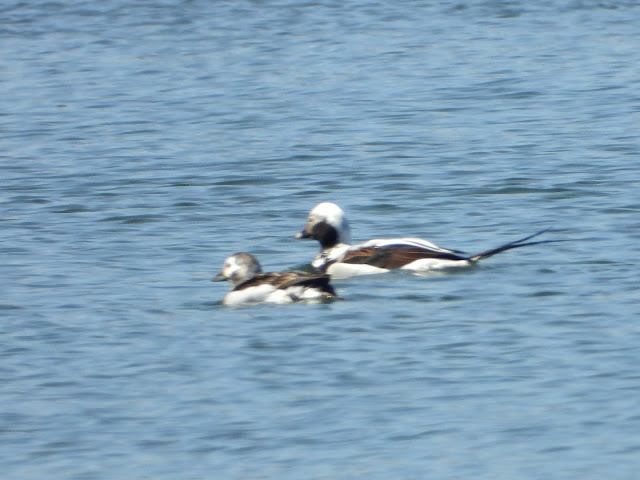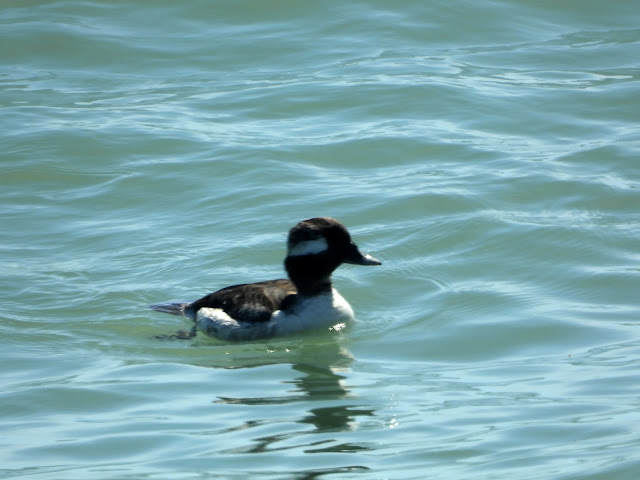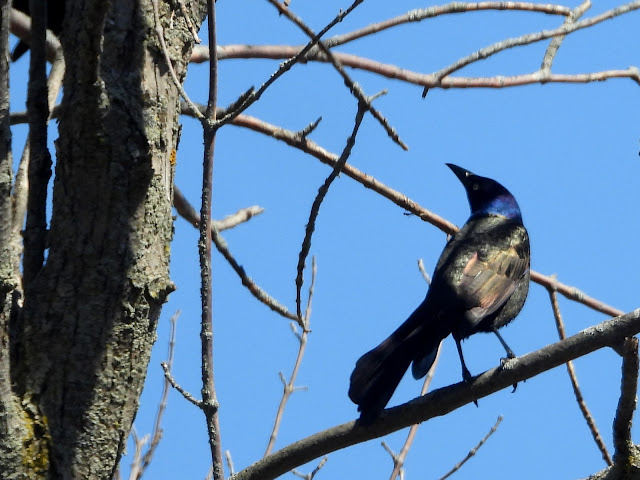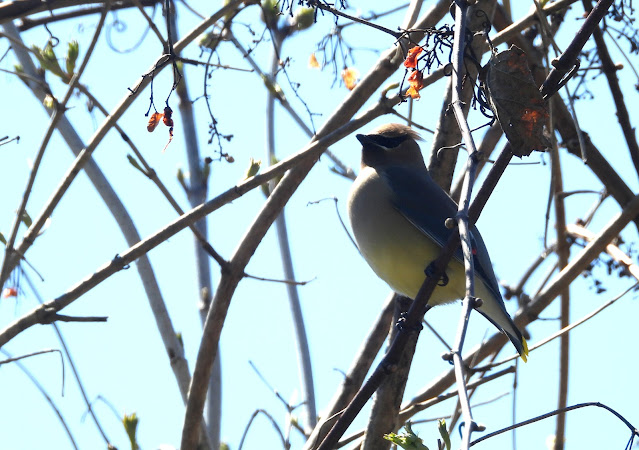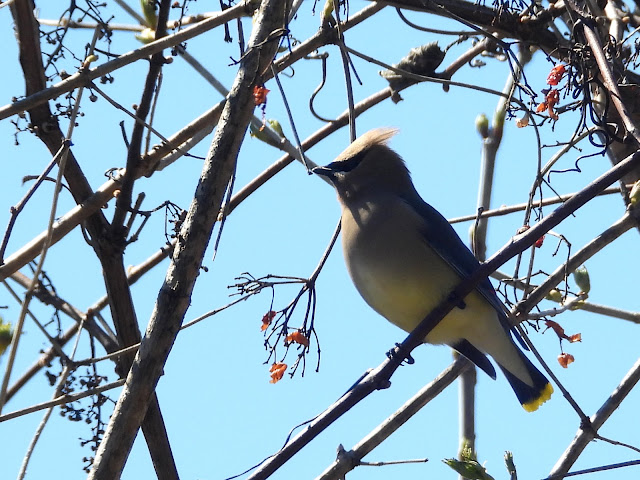Birds, nature, travel & art: U.S.-Canada-Costa Rica-Panama-Australia-New Zealand-Fiji-South Africa-Zambia-Zimbabwe-Botswana-Trinidad & Tobago-Mexico-Bahamas-Jamaica-Grand Cayman-Portugal-Italy-Greece-Turkey-Dominican Republic-Columbia-Guatemala-St Kitts-Guadaloupe-Barbados-Grenada-Aruba-Bonaire-Iceland-United Kingdom-Netherlands
Sunday, April 28, 2024
RED-NECKED GREBES: FEMALE GOT INTO NEST, MALE BROUGHT MORE NEST MATERIAL & FEMALE WOULD REARRANGE IT, HUMBER BAY PARK (EAST), TORONTO, 4/28/2024
These male and female Red-necked Grebes were fascinating to watch. When I first saw them both Red-necked Grebes were swimming near and around the nest platform (see 1st photo). There was a nest on the platform that they had already made. After a few minutes the female Red-necked Grebe got into the nest. It looks like she might be ready to lay her eggs soon. Before this and while she was in the nest, the male Red-necked Grebe swam back and forth to the nest with new nest material (see photos 2,3,4,6,8,9,11 & 12). The female would periodically rearrange the nest material to her liking (see 7th photo).
SWAMP SPARROW, ASHBRIDGE'S BAY PARK, TORONTO, ONTARIO, 4/26/2024
This photo was taken while I was taking a photo of another bird, so the camera wasn't focused on this bird. It just happened to come into the frame and then flew away. Even though it's a poor photo, I believe this is a Swamp Sparrow because of its rufous crown, rufous wings, rufous tail, dark streaks on back and buffy flanks with obscure darker streaks.
Saturday, April 27, 2024
FEMALE & IMMATURE MALE BUFFLEHEADS, ASHBRIDGE'S BAY PARK, TORONTO, ONTARIO, 4/26/2024+
I have identified the Buffleheads as follows:
1st Photo - Immature male Bufflehead
2nd Photo - Both Buffleheads are female
3rd & 4th Photos - Immature male Bufflehead
Friday, April 26, 2024
Monday, April 22, 2024
MUTE SWAN DABBLING FOR FOOD, CRANBERRY MARSH, LYNDE SHORES CONSERVATION AREA, WHITBY, ONTARIO, 4/22/2024
Swans feed by "dabbling", that is by staying on the surface of the water and not diving down for their food. Plants are the majority of their diet, but they also eat small aquatic animals, such as fish, insects and invertebrates.



